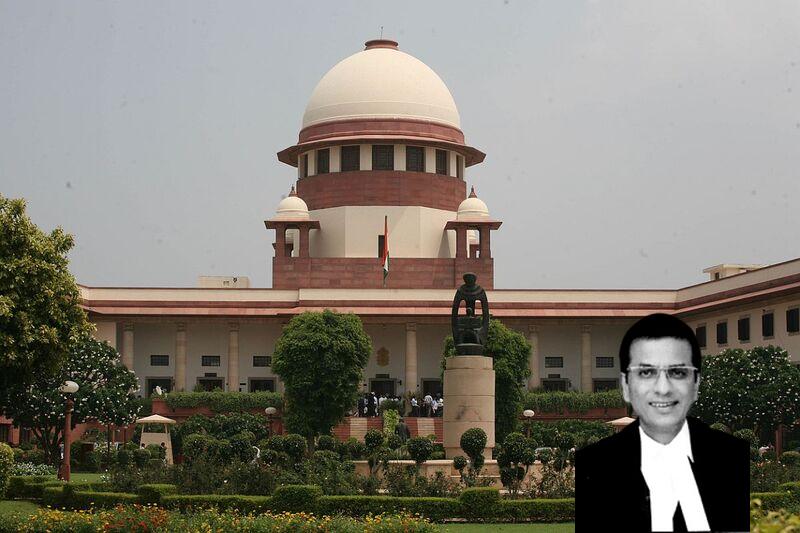Notwithstanding the fact that ‘urban land’ or any regulatory measures in relation thereto fall within the exclusive domain of a State Legislature in terms of Entry 18 of List II—State List under the Seventh Schedule of the Constitution, the Ceiling Act was enacted by Parliament, in exercise of its powers under Article 252 of the Constitution for which as many as 11 States passed a Resolution authorising the Parliament to enact a law imposing a ceiling on urban property, more so after the imposition of a ceiling on agricultural lands in most of the States. Section 6 of the Ceiling Act obligates the person holding ‘vacant land’ in excess of ceiling limit to file statement whereupon the Competent Authority would prepare a draft statement under Section 8 of the Act and after considering any objection received against it, Section 9 contemplates a final statement determining the vacant land held by the person concerned. The person in possession of the ‘vacant land’ on receipt of the notice in writing under sub-section (5) must surrender or deliver possession thereof to the State Government and in the event of his refusal or failure to comply with such order, the Competent Authority is authorised under sub-section (6) to take possession of the vacant land by use of force as may be necessary. Definition.— In this Act, unless the context otherwise requires,— xxx xxx xxx (b) “building regulations” means the regulations contained in the master plan, or the law in force governing the construction of buildings; xxx xxx xxx (g) “land appurtenant”, in relation to any building, means— (i) in an area where there are building regulations, the minimum extent of land required under such regulations to be kept as open space for the enjoyment of such building, which in no case shall exceed five hundred square metres; or (ii) in an area where there are no building regulations, an extent of five hundred square metres contiguous to the land occupied by such building, And includes, in the case of any building constructed before the appointed day with a dwelling unit therein, an additional extent not exceeding five hundred square metres of land, if any, contiguous to the minimum extent referred to in sub-clause (i) or the extent referred to in sub-clause (ii), as the case may be; xxx xxx xxx (o) “urban land” means,— (i) any land situated within the limits of an urban agglomeration and referred to as
Explanation.—For the purpose of this clause and clause ( q ),— ( A ) “agriculture” includes horticulture, but does not include— ( i ) raising of grass, ( ii ) dairy farming, ( iii ) poultry farming, ( iv ) breeding of live-stock, and ( v ) such cultivation, or the growing of such plant, as may be prescribed; ( B ) land shall not be deemed to be used mainly for the purpose of agriculture, if such land is not entered in the revenue or land records before the appointed day as for the purpose of agriculture: Provided that where on any land which is entered in the revenue or land records before the appointed day as for the purpose of agriculture, there is a building which is not in the nature of a farm-house, then, so much of the extent of such land as is occupied by the building shall not be deemed to be used mainly for the purpose of agriculture: Provided further that if any question arises whether any building is in the nature of a farm-house, such question shall be referred to the State Government and the decision of the State Government thereon shall be final; ( C ) notwithstanding anything contained Kolkata City admittedly falls within category ‘A’ specified in Schedule I of Section 4(1) of the Ceiling Act with the Ceiling Limit of 500 sq.m. A Notification under Section 10(1) was issued on 7 November, 1979 followed by a declaratory Notification under Section 10(3) on 5 January, 1980 whereby land measuring 2929 sq.m. The precise contention raised before the High Court and reiterated before us on behalf of the appellants is that the procedure of calculating ‘excess vacant land’ adopted by the Competent Authority is derogatory to Section 2(q)(i) and 2(q)(ii) read with Clause 20(2) of Building Regulations notified under the Calcutta Municipal Corporation Act, 1951. As of now, we need not consider the question whether there existed any building’ within the meaning of sub-clause (ii) of Section 2(q) of the Ceiling Act on the subject land which could qualify for exclusion from the permeates of a ‘vacant land’.
Further, if the appellants’ plea to exclude the area covered under an existing building is accepted, in that case, the area of vacant land’ gets further reduced in view of sub- clause (ii) of Section 2(q) of the Ceiling Act. has been rightly treated as ‘vacant land’, out of which the appellants are entitled to retain 500 sq.m. The District Judge as well as the High Court held that Jhonson was entitled to retain 500 sq.m. The High Court, in this regard, relied upon Section 4(9) read with Section 2(q)(ii) of the Ceiling Act. For instance, if an open land without construction consists of 6000 sq metres, the computation of the ceiling area would present no difficulty because 4000 sq metres will be taken over by the Government and 2000 sq metres will be left to the landholder. Clause ( i ) gives a blanket exemption to any land situated in an urban area where the entire area is covered by land on which it is not permissible to raise a building which will not be deemed to be vacant land within the meaning of Section 2( q ). The words ‘land appurtenant’ used in Section 4(9) takes us to its connotation as defined in Section 2( g )( i ) and ( ii ) which may be extracted thus: “( g ) ‘land appurtenant’, in relation to any building, means— (i) in an area where there are building regulations, the minimum extent of land required under such regulations to be kept as open space for the enjoyment of such building, which in no case shall exceed five hundred square metres; or (ii) in an area where there are no building regulations, an extent of five hundred square metres contiguous to the land occupied by such building, and includes, in the case of any building constructed before the appointed day with a dwelling unit therein, an additional extent not exceeding five hundred square metres of land, if any, contiguous to the minimum extent referred to in sub- clause ( i ) or the extent referred to in sub-clause ( ii ), as the case may be;” 19. Thus, according to Jhonson, Section 2(q)(i) gives a blanket exemption to any land situated in an urban area where the entire area is covered by land on which it is not permissible to raise a building. A notice was served by the Competent Authority on the proposed vendor and vendee under Section 6(1) of the Ceiling Act directing the vendor to file the statement in Form No 1 as she was holding ‘vacant land’ within the Calcutta Urban Area in excess of the ceiling limit of 500 sq.m. The second category is of land occupied by any building in an area, where there are building regulations, which has been constructed upon, or is under construction on the appointed day, with the approval of the appropriate authority, and the land appurtenant to such building. The aforesaid three categories of lands would otherwise be “vacant land” but for the definitional exclusion. It seems to us that the expression “vacant land” in the first portion of the provision connotes land minus land under buildings constructed or in the process of construction before and on the appointed day, and the expression “vacant land” in the latter portion of the provision connotes the sum total of “vacant land” of the first order and distinctly the “other land” on which is a building with a dwelling unit therein of which construction commenced after the appointed day, and the land appurtenant thereto. This interpretation in express terms cannot apply to sub-clause (i) of clause (q) of Section 2. vs State of Uttar Pradesh and Others, a two-Judge Bench of this Court was confronted with a dispute re: the interpretation of sub-section (9) of Section 4 read with sub-section (q) of Section 2 of the Ceiling Act.
Since Meera Gupta case [(1992) 2 SCC 494] was decided by a Bench of three Judges, the contention raised by the respondents should be considered by a larger Bench. Angoori Devi was then placed before a three- Judge Bench on March 19, 1997 when it was referred to a Larger Bench of five-Judges. The Parliament thereafter enacted the Urban Land [Ceiling and Regulation] Repeal Act, 1999 which came into force in the States of Haryana and Punjab and all the Union of Territories with effect from 11 January, 1999, and in other States from the date of adoption of the Repeal Act under Clause (2) of Article 252 of the Constitution. The repeal will not, however, affect vesting of any vacant land under sub-section (3) of section 10 of the Urban Land (Ceiling and Regulation) Act, 1976 the possession of which has been taken over by the State Governments. The High Court relied upon the Building Regulations as were in force in the Koregaon Park area of Pune whereunder no construction on more than 1/3 of the total area of the plot was permissible. [for Khare, CJ and himself] analysed Section 2(q)(i) and affirmed the view taken by the High Court, laying down as follows: “A plain reading of the provision would show that any land on which construction is not permissible under the building regulations in force in the area would not come within the ambit of “vacant land”. As under the relevant rules in force in the area construction was not permissible on two- thirds of the area of the plot, the High Court was perfectly justified in holding that for determining the vacant land in CTS No 82, Koregaon Park, Pune, two-third portion of each of the respondents had to be excluded and thus the vacant land held by each one of them in the said area was only 905 sq metres. The expression ‘means’ in Section 2(q) of the Ceiling Act was held to be, prima facie, restrictive and exhaustive. [(1997) 2 SCC 434] stating that the decisions of this Court in Johnson case [(1983) 4 SCC 110] and Meera Gupta case [(1992) 2 SCC 494] are in conflict with each other and Johnson case [(1983) 4 SCC 110] should hold the field.



